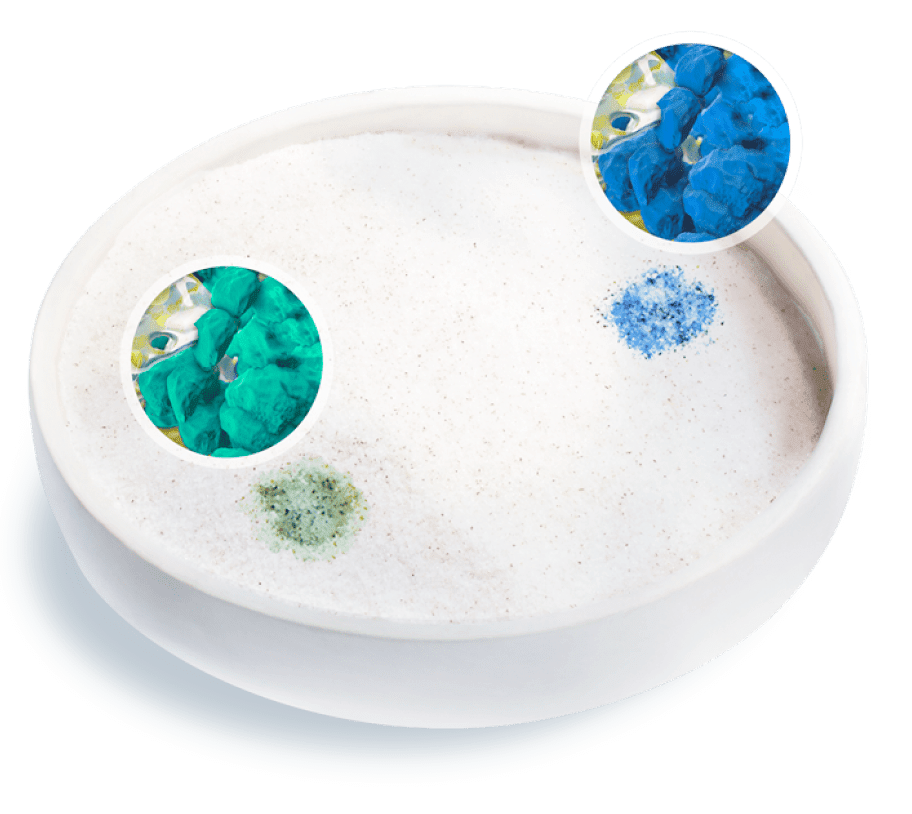Let’s Get the Magic Started
Top Tips for Litter
Box Perfection

How to Use
Setup
Fill each litter box with
3+ inches of fresh litter.
Note: Avoid placing your cat’s litter box in humid areas like bathrooms or laundry rooms for maximum odor control.
Everyday Use
Scoop daily, disposing of
clumps and solids in trash.
Stir gently, making sure
that the litter on the
bottom is mixed with litter
on top.

Add litter as needed to
maintain 3+ inches of depth.
Note: PrettyLitter will naturally turn a soft golden color over the course of use. Just as liquids change the color of the litter when saturated, the moisture in the air gradually changes the tone of the crystals. This is normal and shows that the pH monitor is working!
When to Change
Dispose of all litter and clean the litter
box with warm water and mild soap
every 1-2 months or as needed.
Easy transition
Most cats take to PrettyLitter right away, but some cats require a few days to transition to any new litter. In this case, start by filling your litter box with 75% PrettyLitter and pour a 25% layer of the previous litter on top. You can use 100% PrettyLitter next month.

What Can the Colors Mean?
Typical
Dark yellow / olive green indicates urine within a typical, healthy range.
Orange
Acidity outside the average range, which may be a sign of metabolic acidosis or kidney tubular acidosis. Calcium oxalate crystals can be more likely to form in acidic urine.
Blue / Dark Green
Alkalinity outside of the average range may be present if your cat has certain types of urinary tract infections. Highly alkaline urine can increase the risk of struvite crystal/stone formation.
Red
Visible presence of blood, which may indicate Feline Lower Urinary Tract Disorder (FLUTD), bladder stones/crystals, kidney stones, bladder inflammation, certain types of kidney disease and clotting disorders.

Subscriber Exclusive:
Refer A Friend,
Get Free Litter!
Subscriber Exclusive:
Refer A Friend,
Get Free Litter!
As a subscriber, when you refer a friend and they subscribe,
you'll both get a free bag of PrettyLitter!

Frequently Asked Questions
When the litter is olive green to yellow, your cat's urine is within the typical range. Want to test this color? Tap water will have a similar pH and show green to yellow.
The litter turns blue when urine is more alkaline than normal and may mean a urinary tract infection, for example. Want to test your litter? Ammonia will have a similar pH and show blue.
The litter turns orange when urine is more acidic than the normal range. This may mean bladder crystals or stones. Want to test this color? Vinegar will have a similar pH and show orange.
Because our litter is white, blood in urine appears red and is easy to spot. We advise against mixing PrettyLitter with any other litter because it can affect the visibility of the color change and its performance.
Still Have Questions?
